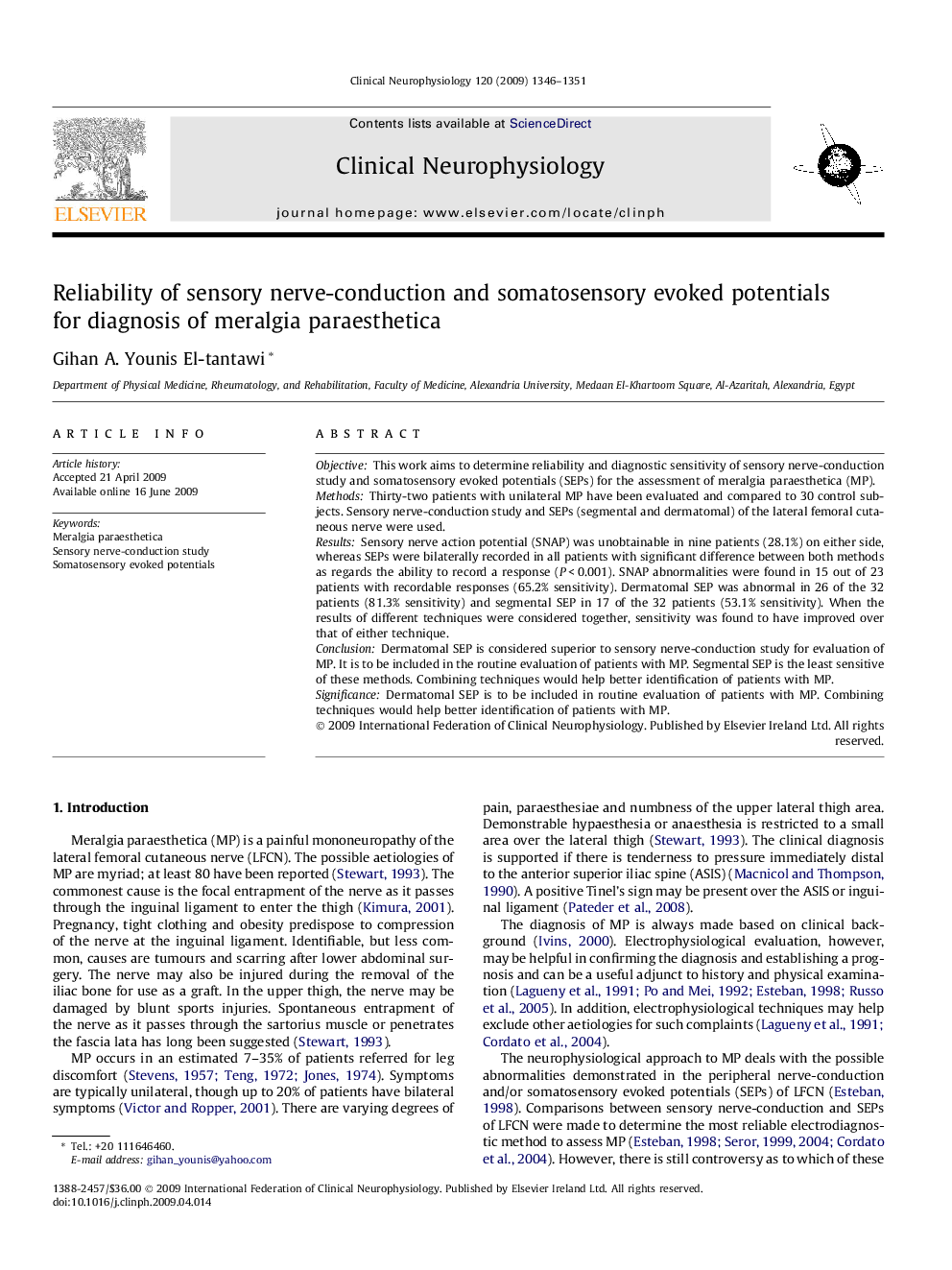| Article ID | Journal | Published Year | Pages | File Type |
|---|---|---|---|---|
| 3046568 | Clinical Neurophysiology | 2009 | 6 Pages |
ObjectiveThis work aims to determine reliability and diagnostic sensitivity of sensory nerve-conduction study and somatosensory evoked potentials (SEPs) for the assessment of meralgia paraesthetica (MP).MethodsThirty-two patients with unilateral MP have been evaluated and compared to 30 control subjects. Sensory nerve-conduction study and SEPs (segmental and dermatomal) of the lateral femoral cutaneous nerve were used.ResultsSensory nerve action potential (SNAP) was unobtainable in nine patients (28.1%) on either side, whereas SEPs were bilaterally recorded in all patients with significant difference between both methods as regards the ability to record a response (P < 0.001). SNAP abnormalities were found in 15 out of 23 patients with recordable responses (65.2% sensitivity). Dermatomal SEP was abnormal in 26 of the 32 patients (81.3% sensitivity) and segmental SEP in 17 of the 32 patients (53.1% sensitivity). When the results of different techniques were considered together, sensitivity was found to have improved over that of either technique.ConclusionDermatomal SEP is considered superior to sensory nerve-conduction study for evaluation of MP. It is to be included in the routine evaluation of patients with MP. Segmental SEP is the least sensitive of these methods. Combining techniques would help better identification of patients with MP.SignificanceDermatomal SEP is to be included in routine evaluation of patients with MP. Combining techniques would help better identification of patients with MP.
